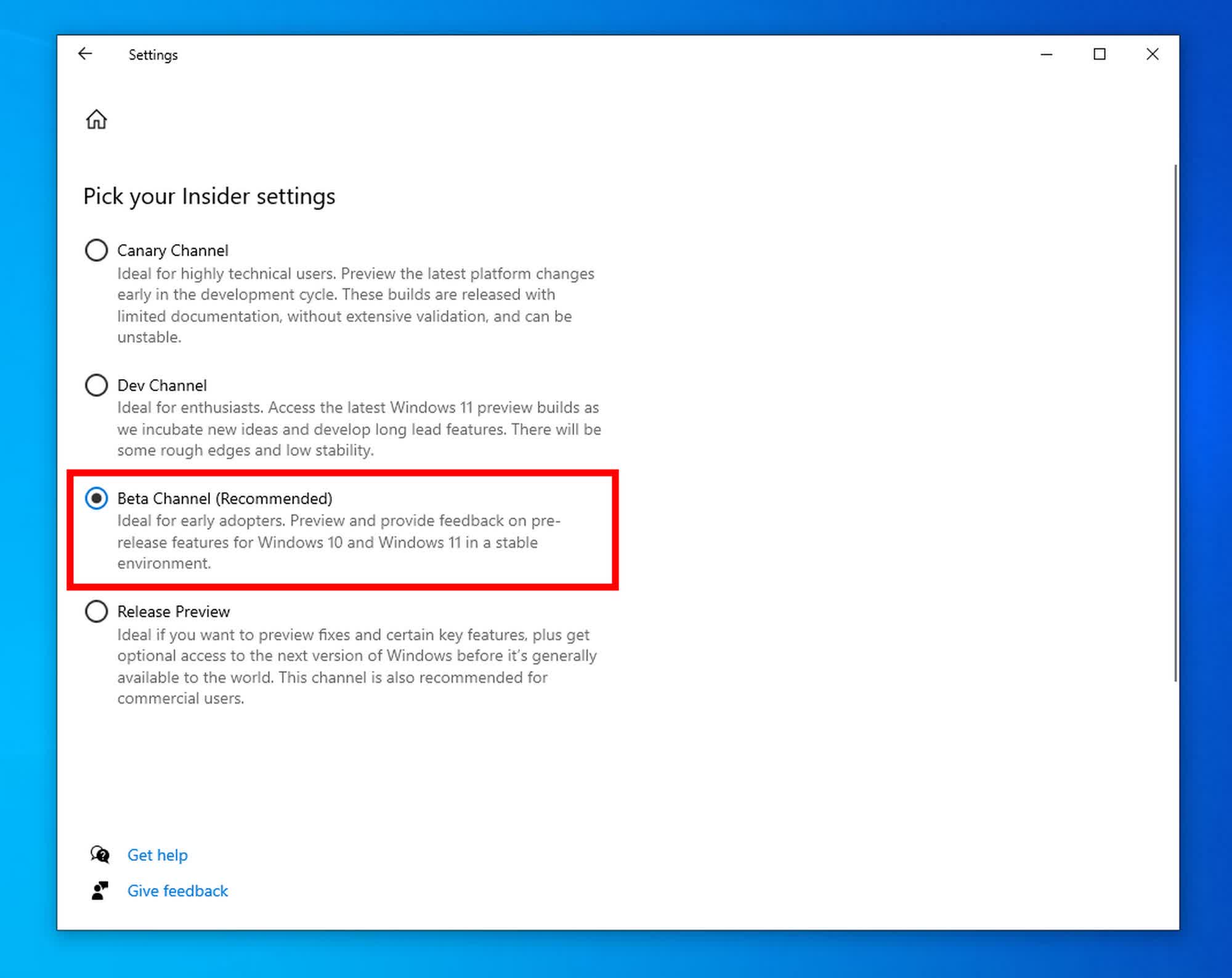Surprise! Microsoft has announced the revival of its beta testing program for Windows 10 with the promise of "new features and more improvements" for the aging operating system. The policy reversal is surprising, considering that the scheduled end of support for Windows 10 is just over a year away – October 2025.
Explaining its decision to reopen the beta channel, Microsoft said that it will allow all Windows 10 users to get the maximum value from their current PC. The new policy will help the company try out new features for Windows 10 (version 22H2) with Insiders before releasing them to all Windows 10 users globally.
If you are part of the Insider program and still using Windows 10, Microsoft recommends that you switch to the beta channel to try out new features. You can do this by going to Settings, selecting Update & Security, choosing Windows Insider Program, and then clicking on the current Insider channel selection to see the full list of available options. Now simply choose "Beta Channel" by clicking on the corresponding radio button.
It's unclear what new features Microsoft has lined up for Windows 10, but reports suggest that the Settings menu could get a new "Mobile devices" page to help users manage their smartphones and tablets directly from Settings without having to set up the more elaborate Phone Link app. This feature is currently limited to Windows 11, so its availability on Windows 10 will be a welcome change.
The announcement comes amid reports that Windows 10 is increasing its market share, despite Microsoft's push for users to upgrade to Windows 11. According to the latest data from StatCounter, Windows 10 has a 70 percent market share among Windows users, while Windows 11 is languishing at around 25 percent. The primary cause for Windows 11's disappointing adoption rate is believed to be the stringent hardware requirements that prevent many relatively newer and capable PCs from upgrading.
While the impending availability of new features in Windows 10 is most welcome, Microsoft confirmed to Windows Latest that the new policy does not change its end-of-life date, meaning the company is still planning to end general support for Windows 10 on October 14, 2025.
Users who still want to receive security updates after the official end of support will have the option of enrolling their PCs in a paid Extended Security Updates (ESU) subscription that will cost between $45 and $61 per device for the first year, with the cost doubling every subsequent year.

